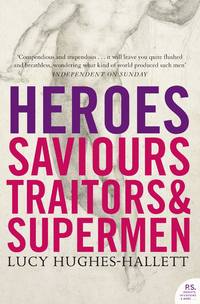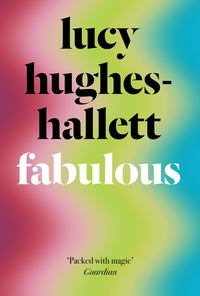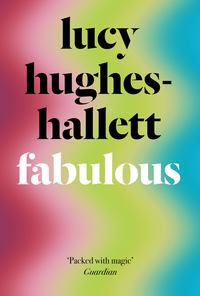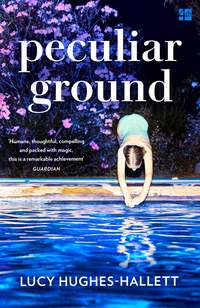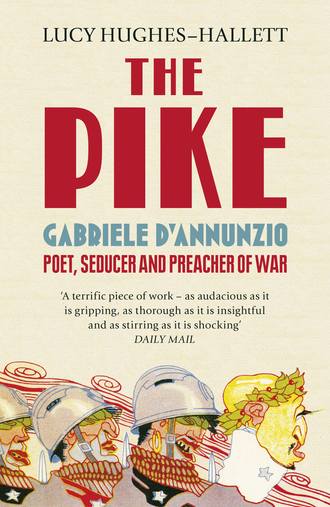
Полная версия
The Pike: Gabriele d’Annunzio, Poet, Seducer and Preacher of War
That d’Annunzio was an eager lover of women is a copiously documented fact. Whether he also enjoyed sex with men is unknown. Some of his schoolboy letters could be interpreted as suggesting so, but it was not unusual in d’Annunzio’s lifetime for same-sex friends to write to each other as sentimentally as lovers. Here is his account of an adolescent friendship with another boy: ‘We smiled at each other, scarcely, scarcely glancing at each other from beneath the corners of our eyelids … and I have never forgotten that moment of our friendship; which glows for me with an inexplicable beauty.’ Writing to his elder patrons he was flirtatious and emotional. He told Cesare Fontana: ‘I have read and reread your lovely letter twenty times … What can I say in return for so many sweet, fond, expressions of affection? That I love you too? … Oh believe it, believe, dear friend.’
If d’Annunzio did have sexual contact with any of these boys or men, it would not be surprising that he didn’t publicly admit to it; few men at this time would have dared do so. But given the quantity of his private writings – letters, notebooks, jottings – to which we now have access, and given his compulsion to note everything, even the most intimate details of his love life, the absence of any recorded trace of a homosexual affair strongly suggests that he never had one. In his memoirs he explicitly distinguishes his sentimental ‘friendships’ with other boys, from the ‘love’ which he had yet – at the time recollected – to experience. In his late novel, Maybe Yes, Maybe No, he imagines a pair of male friends, comrades who undertake a sequence of masculine adventures together. Their comradeship is so strong precisely because it is ‘clean’. Like a great many other men of his generation, he idealised male companionship as an escape from the erotic, from the clinging, energy-sapping, over-ripeness of the women whom he bedded.
Whatever his orientation, though, there was something sexually ambiguous about d’Annunzio. The adolescent whose feminine prettiness and girlish voice had so enchanted Scarfoglio, matured into a small man with wide womanly hips who took a far greater interest in clothes and flowers and table-settings than was generally considered consonant with heterosexual masculinity.
People, especially women, whose gender identity was equivocal, interested him. One of the things that pleased him about Olga Ossani was her ‘fine androgynous head’ and his fictional Andrea Sperelli is writing a ‘Story of a Hermaphrodite’. In his fiction d’Annunzio was repeatedly to conjure up pairs or trios of women, sisters or close friends, between whom the hero must choose, or into whose sensuously intimate sorority he must insert himself. Maria Ferres and her hostess, both in love with Sperelli, remember with delight their voluptuous pleasure in brushing each other’s hair at boarding school and there are two overtly lesbian characters in Pleasure. One of them is a great lady with a ‘strong masculine voice’ whose black eyes, in the course of a lunch party in a princely residence, ‘all too often meet and mingle with the green eyes of the Princess’. The other is a demi-mondaine, heavily made-up but with her curly hair so short it looks like an astrakhan cap, and wearing a jacket and waistcoat of masculine cut, a monocle and a starched cravat. She smokes at the dinner table, and swallows oysters greedily. Sperelli is attracted by the suggestion of ‘vice, of depravity, of the monstrous’ in her manner and appearance.
Eleonora Duse, d’Annunzio’s lover for eight years, was rumoured to be bisexual. Romaine Brooks, with whom he had an affair during his years in France, was overtly lesbian. Ida Rubinstein, the actress and mime, and the eccentric millionairess Luisa Casati – with each of whom he had great friendships and minor affairs – both played theatrical variations on their gender identities, appearing naked in public, or cross-dressing. But when, a quarter of a century after that night in the Villa Medici gardens with Olga, d’Annunzio would write a play (with music by Debussy) of The Martyrdom of Saint Sebastian, he wrote it expressly for Ida Rubinstein. Sebastian – victim-hero of so many gay male fantasies – would be played in d’Annunzio’s version by a woman.
Probably not an active homosexual, then, but certainly a sado-masochist. Exploring Rome and its treasures, d’Annunzio was particularly moved by Michelangelo’s Pietà. He elaborated a self-regarding fantasy in which he imagines his mother as Michelangelo’s Madonna and himself as the dead Christ, thus placing himself imaginatively in another tableau vivant in which he plays a beautiful, tortured nearly nude young man.
The cult of the dying youth was one of the themes d’Annunzio had found in the English Romantics. He alluded frequently to Keats, the tragic poet ‘half in love with easeful death’, whose last home on the Spanish Steps d’Annunzio walked past almost daily; and to Shelley, who mourned Keats so mellifluously in Adonais, before dying himself, aged thirty, drowned whilst out sailing. In 1883, d’Annunzio wrote his own Adonis, which concludes: ‘Thus died the youth, in a great mystery of Pain and Beauty as imagined by my Dream and Art.’ In Pleasure, Sperelli takes Maria Ferres to the English Cemetery in Rome. (Oscar Wilde, visiting Keats’s grave there, mused on the resemblances between Keats and St Sebastian, each of them ‘a Priest of Beauty, slain before his time’.) D’Annunzio’s fictional lovers are mournful: Maria takes off her black veil, wraps it around a bunch of white roses and leaves them on Shelley’s grave. ‘He was our poet.’
Six decades after Shelley’s death, Romanticism had ripened into the late Romantic melancholy of Tennyson and Baudelaire, and then over-ripened into decadence. The exquisite sadness clinging to the Romantic image of doomed youth had given way to a more feverish mood and a more knowing discourse. Posing for his sexual partner as a martyred saint, d’Annunzio was titillating himself with the image of a young man tortured and killed. Later he would have plentiful opportunities to see that image made reality. In 1915 he planned his arrival at Quarto at the head of a troop of young volunteers whose ‘blood was ready to be spilt’, human sacrifices like the slaves killed in the ‘holocaust’ Flaubert describes in Salammbô. Throughout the Great War, d’Annunzio was to refer over and over again, and in increasingly exalted tones, to dead soldiers as ‘martyrs’, whose deaths must be honoured by the sacrifice of further beautiful youths. What had begun as an erotic fantasy shaped by an aesthetic trend would become a motive for slaughter.

SICKNESS
ELVIRA FRATERNALI LEONI, whom d’Annunzio called Barbara or Barbarella, was a year or two older than him, golden-skinned with huge pale eyes. He made her acquaintance at a concert in April 1887, when he was just twenty-four and his wife was pregnant with his third child. By the end of the month he and Barbara were meeting almost daily, initially in the studio of one or other of d’Annunzio’s artist friends, and soon in a room he rented for the purpose.
‘Neither the strength of Hercules nor the beauty of Hippolytus has as much power to thrill a woman as fame does,’ wrote d’Annunzio. By now he enjoyed fame of a particularly seductive kind. He was the poet celebrated for his erotically transgressive verses, and the lover whose elopement had been scandalous. He was both a serious artist, acclaimed by his peers, and a known libertine. ‘How sweet it must be for the loving women to be able to say … I possess, body and soul, this mysterious being, the flight of whose chimeras makes women swoon with passion.’ In other words the poet was a star, and like any star he had his groupies. A male friend wrote that d’Annunzio was a ‘Siren. No one could resist him.’ By the time he met Barbara he had had at least one fleeting affair since parting from Olga. There were probably other, undocumented liaisons. But with Barbara he fell abjectly in love. When she left Rome briefly, he haunted the post office, desperate for her letters, and sat uncharacteristically silent in the Caffè Morteo, until, overcome, he left in tears.
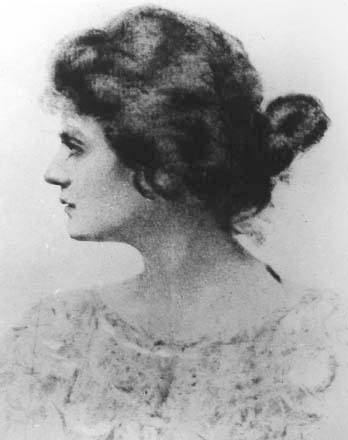
Barbara was not one of the aristocrats about whom he wrote. Her parents were lower-middle class, devout Catholics who spoke with a pronounced regional accent. She had been married off when she was twenty to a Count Leoni, a Bolognese businessman whose title may have been spurious. Leoni treated her so brutally that she left him within weeks and returned to live with her parents, but from time to time he would reappear, demanding his marital rights. When Andrea Sperelli’s mistress tells him, after her marriage, that if he wishes to continue their affair he will have to share her sexual favours with her husband, he refuses, aghast. In real life, in this and several other instances, d’Annunzio was obliged to accept the situation. He even seems to have relished the fact that Barbara was bruised and shaken after one of Leoni’s visits.
Barbara was alluring: photographs show a chic young woman, with a full-lipped, painted mouth and eyes uplifted to reveal an arc of dazzling white beneath the irises (‘the most beautiful eyes in Rome’, according to one of d’Annunzio’s contemporary biographers). D’Annunzio, delighting as usual in gender confusion, praised her boyish figure and masculine little hats. She was well read and intelligent: it was she who recommended to her lover the newly translated works of Tolstoy and Dostoevsky. She was a skilled pianist who had studied at the Milan Conservatory. Most fascinating of all, or so it seems from d’Annunzio’s many hundreds of letters to her, she was chronically ill. She was epileptic, and she suffered from some sort of gynaecological complaint. She may have contracted a sexually transmitted disease from her husband; she may have undergone a botched abortion; or perhaps she had some congenital malformation. Either way, she was ailing and often in pain.
All of this was very exciting for d’Annunzio. As a student he had neglected the lectures and classes he should have attended, but he had sat in on the course given by the noted physiologist Jacob Moleschott. His early stories are full of images of disease and wounding, described with unflinching exactitude. He would turn to Barbara to corroborate the details of the ailments of his heroines Elena Muti (in Pleasure), Giuliana Hermil (The Innocent) and Ippolita (The Triumph of Death), all of whom are, like their real-life prototype, especially alluring when their illness makes them temporarily untouchable. Brows damp with sweat, pale skin, cracked lips, clouded eyes are described as though they were the signs of sexual rapture. Illness as an aphrodisiac was a commonplace of Decadent literature, but it was one to which d’Annunzio responded with particular enthusiasm. In Pleasure he would give an intensely erotic account of a sickbed seduction. Barbara provided that thrill in real life. ‘Sick and tired like this you please me,’ he wrote to her when she was ill in bed. ‘Your beauty is spiritualised by illness … Your face takes on a profound, superhuman pallor … I think that when you are dead you will reach the supreme light of beauty.’
There were times, including the first few occasions they were alone together, when Barbara’s complaint made penetrative sexual intercourse impossible for her. No matter: the impediment to their love-making seems only to have heightened their pleasure. D’Annunzio wrote letters full of ecstatic gratitude, reminiscing about their protracted kisses, telling all over again how he licked and sucked and bit every inch of her body. He described how they wound themselves around each other, head to tail, on and under a big armchair in their rented room. ‘As I write in a fever (how I tremble!) I can still feel between my lips the little soft folds of your rose, which I sucked greedily as one sucks the juice from a fruit. Do you remember?’ (The rose for d’Annunzio, as for the mediaeval poets he had been reading, stood for the female genitals.) He recalls delicious hours in bed as he lay, eyes shut, wondering on which part of his body he would next feel her cool lips. And then there were the days when they no longer needed to hold back. His letters tell of a ‘savagely’ urgent coupling in a railway carriage (he would repeat the passage almost verbatim in The Triumph of Death).
His relationship with Barbara gave rise to his Roman Elegies, the first of his mature poem-cycles. Their title is borrowed from Goethe. Their philosophical underpinning is provided by Shelley and Schopenhauer. Their insistence on the correspondances between the material world and human emotion is inspired by the French Symbolists whom d’Annunzio had been reading, but the dazzling achievement of the elegies is d’Annunzio’s own.
By this time the poet was fully in control of his medium. He stretches his verse-form to its limits; he twists it to his emotional purpose, he exploits its rhythms to make effects now plangent, now joyful. In one of the poems Barbara is named. In all of them she is the ‘the one who was at my side’, and she was among his first readers. In the poems describing the early stages of their affair, happiness beats through the lines. One afternoon, in the gardens of the Villa d’Este with Barbara, d’Annunzio wrote two versions of an elegy in which he claims that the fountains, the roses, the trees, every leaf and stalk of the marvellous Tivoli gardens owed their beauty and their gushing life to her. Both manuscripts survive, one dated five o’clock and one six o’clock of the same June afternoon.
He couldn’t get enough of Barbara; he was racked whenever they were apart by his insatiable craving for her body. Several of his biographers have described her as the love of his life, but the word he uses most often in his letters to her is not ‘love’, but ‘desire’. Readers of Pleasure imagined the novel’s author to be a nonchalant seducer like Andrea Sperelli, who makes love to his friend’s mistress for no reason whatsoever, out of idleness and vanity. But d’Annunzio was not a careless Don Juan. His appetite for sex has been the occasion for much salacious merriment, in his lifetime and ever since, but it was often cruel, to others and to himself as well.
Centaurs, chimeras, satyrs and other hybrid beings recur in his imaginative work. Repeatedly, he describes himself as a faun: a feral half-human, smooth-skinned homo sapiens from the waist up, a hairy beast below. Fauns were fashionable. D’Annunzio had read Mallarmé’s famous poem, but for him the image expressed a fundamental conflict. Sometimes the self-description is gleeful, the conceit of a physically self-confident young man pleased to see himself as a mischievous animal. Sometimes it hints at self-loathing and shame.
A few weeks after he met Barbara, d’Annunzio was summoned to Pescara to help deal with a family crisis. His father, Francesco Paolo, had been running through money at a disastrous rate. D’Annunzio’s mother’s inheritance was all but gone. There was little chance of finding dowries for his sisters. Over the next six years, d’Annunzio was to find his own financial problems greatly aggravated by his father’s. He would be sending handouts to his mother for the rest of her life.
It is nearly always unwise to imagine one can deduce anything certain about a novelist’s life from a reading of his fiction, but d’Annunzio’s The Triumph of Death (begun in 1889 and published in its final form five years later) is an exceptional case. It is a novel in which the author’s own love letters are quoted verbatim, and one which describes in exact detail the place in which it was first written. D’Annunzio told Romain Rolland that it was ‘not imaginary at all’. Its hero, Giorgio Aurispa, a sophisticated young city-dweller like d’Annunzio, revisits his family in the Abruzzi. His fictional father is a portrait of d’Annunzio’s real one. More painfully, it is also a kind of self-portrait: the author as seen in a hideously distorting glass.
When he went to see Francesco Paolo that summer of 1887, d’Annunzio himself was already spending way over his income. Aurispa’s father, like d’Annunzio’s, is plundering his wife and children’s home to pay his mistress’s expenses. D’Annunzio was renting a room for his meetings with Barbara with money desperately needed by his legitimate family. The fictional father is shifty, telling transparent fibs. D’Annunzio, still living with his wife but meeting Barbara nearly every day, must have been lying hour by hour. Aurispa is fastidious and physically refined. So was d’Annunzio, the neat little man who even as a schoolboy was already spending inordinate sums on laundry. Aurispa contemplates his father: ‘Fat, full-blooded and powerful, a hot breath of carnal vitality seemed to emanate from his whole person … His face bore the impress of a violent and harsh nature … All this inspired him [Aurispa] with a feeling akin to nausea … And I, I am the son of this man!’ Looking at his real-life father, d’Annunzio likewise recoiled as though from a hideous caricature of himself. Like the picture in Dorian Gray’s attic (Oscar Wilde’s novel would be published in the same year as the first instalment of The Triumph of Death), Francesco Paolo d’Annunzio was the image of his son’s worst faults. If the son was a faun – a pretty creature from an artificial pastoral – the father was the stinking goat that begot him.
Конец ознакомительного фрагмента.
Текст предоставлен ООО «ЛитРес».
Прочитайте эту книгу целиком, купив полную легальную версию на ЛитРес.
Безопасно оплатить книгу можно банковской картой Visa, MasterCard, Maestro, со счета мобильного телефона, с платежного терминала, в салоне МТС или Связной, через PayPal, WebMoney, Яндекс.Деньги, QIWI Кошелек, бонусными картами или другим удобным Вам способом.


